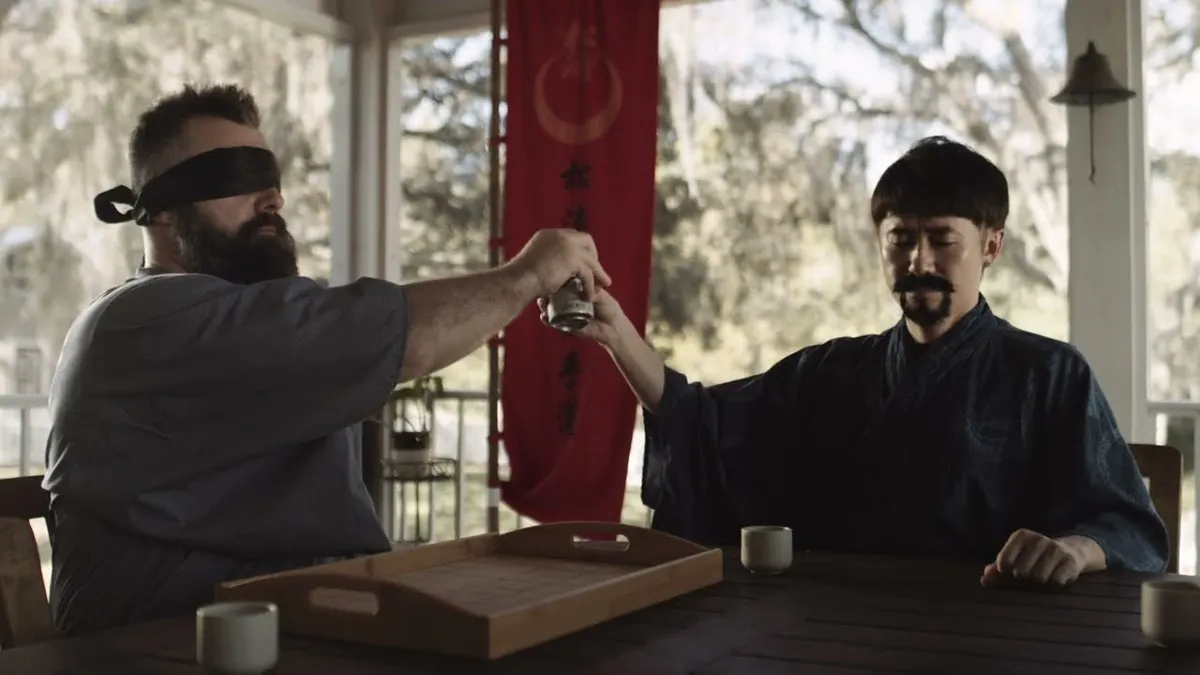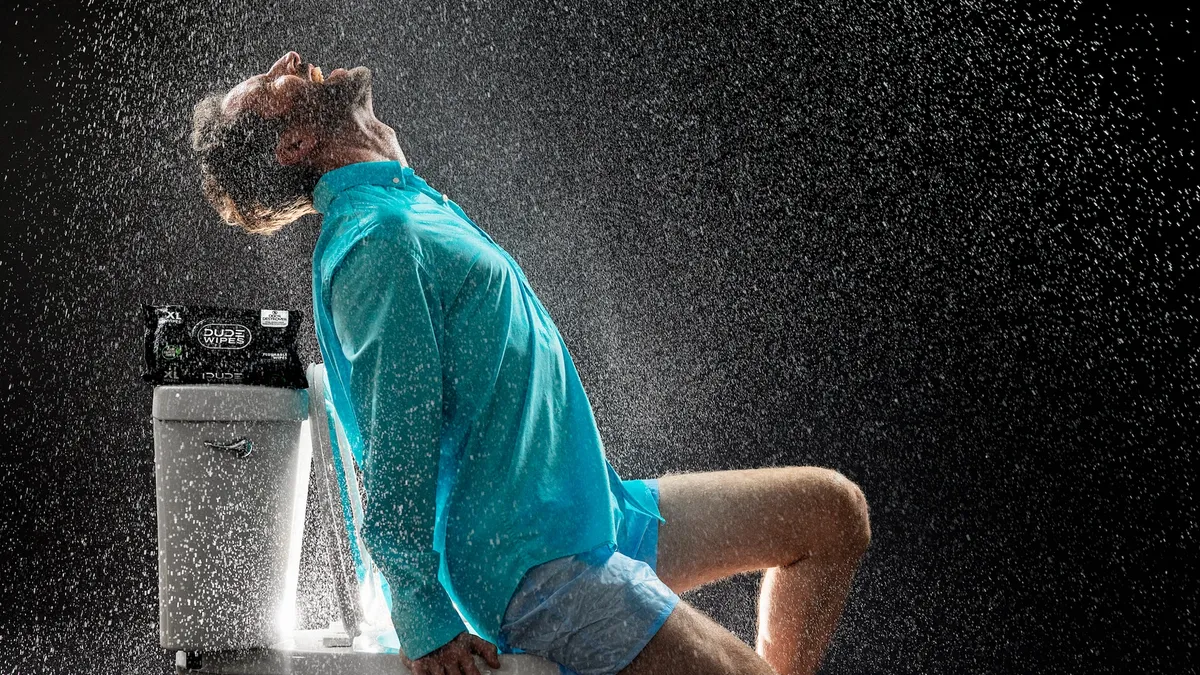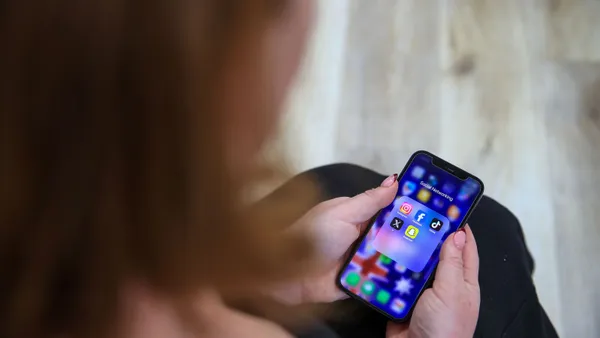With interest in experiential marketing showing no signs of waning, marketers this year kicked their efforts up a notch by extending the idea of a real-world pop-up into a chance to stay overnight with a brand — an attempt to deepen the relationship with fans by taking them directly into the worlds of the brands they love.
In June, for example, reservations sold out within two minutes for a stay at a Taco Bell pop-up hotel in Palm Springs, decked out with the fast food chain's wallpaper, artwork and special breakfast offerings. More recently, fans 21 and older were invited to stay at the Jim Beam American Stillhouse in Kentucky, where they could enjoy bourbon and get a sense of what everyday life for a classic American distiller was once like.
On Airbnb, meanwhile, Mattel gave Barbie fans a chance to stay at a pop-up version of the doll's Malibu dream house for $60 a night to celebrate its 60th anniversary. A similar sense of nostalgia informed a '90s-themed penthouse put up for rent by Lisa Frank, Barsala and Hotels.com. Even the Oscar Mayer Weinermobile has been listed on Airbnb.
The chance to attract the attention of millennials and Gen Zers, who seek out memorable experiences they can share on social media, is a key reason more brands are gravitating toward experiential hospitality.
"People tend to share things they experience that are out of the ordinary, and so it's no surprise that if you're staying in an Oscar Mayer mobile hot dog, you're going to post that to your friends 24/7," said Allen Adamson, an adjunct professor of marketing and branding at NYU Stern School of Business. "On the flip side, a lot of the hospitality brands are struggling to differentiate from each other. You can't do that with better shampoo or a bigger TV set."
Real-world brand-to-fan engagement
Even before Airbnb emerged, brands have toyed with experiential hospitality as a way to get closer to consumers. Back in 2014, Anheuser-Busch's Goose Island beer brand worked with Chicago agency rEvolution on a high-end camping resort on a hop farm, where guests could see the harvesting process, explore wildlife and dine outdoors.
"We could have put them up in a hotel in Spokane or something, but instead we chose to offer this 'glamping' experience to really own it," said Dan Lobring, rEvolution's VP of marketing and communications.
"There have been so many ad dollars invested in digital and social, but we're now moving back toward more of that kind of hand-to-hand or brand-to-fan engagement that happens in real life," Lobring added. "It's hard to place a value on it, and you can't really have that one-on-one engagement through a TV ad."
"This can scale at any level. Of course, a brand that has global backing and an insane budget to do something over the top like Taco Bell is set up for success."

Eric Cup
Bridgewater Studio, managing partner
While the rise of experiential hospitality is partially driven by a desire to build brand equity, some can apply the awareness they already have to bottom-line results, Bill Coan, CEO of ITEC Entertainment, told Marketing Dive.
"If you can increase the dwell time — how long you stay in the venue — you can begin to see directly in proportion what the spend [from consumers] will be," said Coan, whose Orlando-based company works with theme parks like Six Flags and brands such as Sephora. "If I can get you to stay for three hours, for instance, I can sell you some food and drink."
The right concept
Brands don't necessarily have to be household names to try experiential hospitality, said Eric Cup, managing partner at Bridgewater Studio. His firm has built branded interiors for The Graduate Hotel, for example, which taps into the nostalgia of alumni in multiple college towns.
"This can scale at any level," he said. "Of course, a brand that has global backing and an insane budget to do something over the top like Taco Bell is set up for success. At the same time, a lot of it goes back to the concept as well. If people connect with it, it's going to naturally explode."
One question for marketers taking this approach is what to do after the explosion. A common pitfall is lack of follow-through, per NYU's Adamson. Without this, these activations aren't likely to do more than give brands a short-term lift.
"A lot of these stunts and experience-based events suffer from the same challenge as the Super Bowl ads — they're just trying to get some attention," Adamson said. "To move most brand needles you need to run a marathon, not a sprint, and to get some scale. Four people staying in an Oscar Mayer hot dog truck is not enough eyeballs to move the needle. As for the Barbie house, it's not going to save the Barbie brand from continued erosion."
"If any of these efforts are not part of an integrated strategy, it's pointless."

Bill Coan
ITEC Entertainment, CEO
It's important to understand both the branding and revenue opportunities before, during and after a consumer participates in an experiential hospitality campaign, according to ITEC Entertainment's Coan. This means engaging with them through information or offers sometimes months before they arrive, collecting preference data while they're there and continuing the relationship after they leave.
"If any of these efforts are not part of an integrated strategy, it's pointless," Coan said. "If you haven't considered all the opportunities, it would be a shame, because the history of this comes from the major entertainment companies. It's hard to imagine Disney greenlighting a new film today until it has conceived of all the consumer products, the theme park applications and hotel applications."
How far can it go?
Measuring success, meanwhile, can involve more than looking at social media likes and shares, but also surveys and even the impact on retail transactions, rEvolution's Lobring said.
Brands should maximize their investment by considering the opportunities experiential hospitality offers to create more content, Bridgewater Studio's Cup added. Filming guests on site can turn into online videos, social posts or even a TV ad.
"It's more like building a set on a soundstage, except in this case you're having the world be your soundstage," Cup said.
Even if they're the ones hosting, brands must ensure they don't overstay their welcome in consumers minds when injecting themselves into hospitality experiences, Coan said. There may be no way to predict if and when experiential hospitality will become overused as a tactic, or whether it creates an impossible competition for brands to one-up each other.
"Just look at things like Hard Rock Cafe and Planet Hollywood. They were the hottest things going, and now you can't give them away," he said. "Even the geniuses of the industry can't figure out how far to go with this."
Correction: A previous version of this story misidentified the location of Jim Beam's American Stillhouse. It is in Clermont, Kentucky.






















